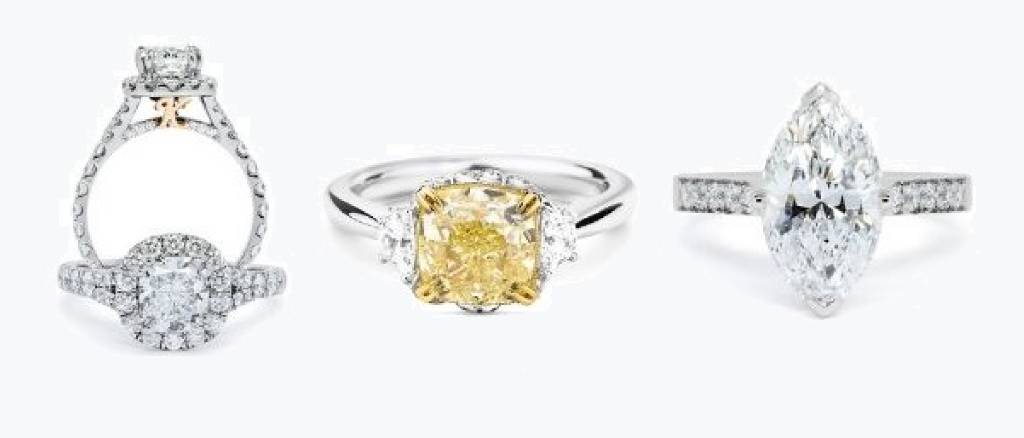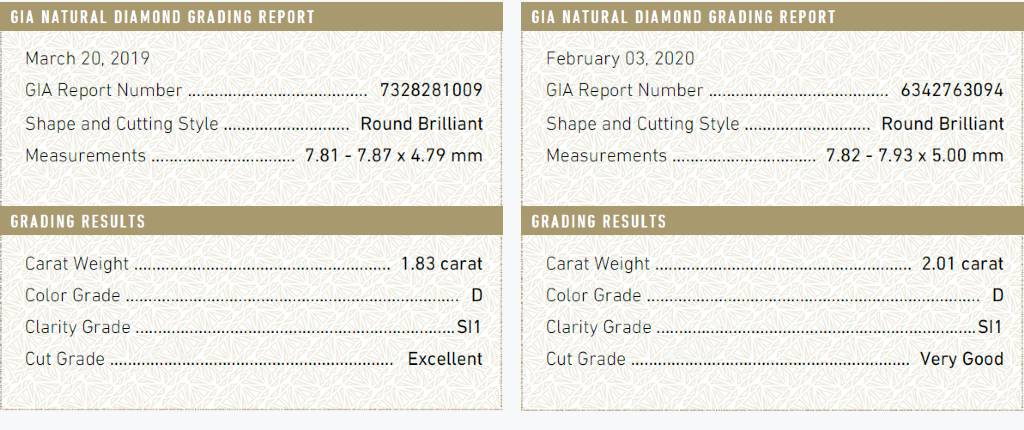By Emily Gray
Nothing quite cements a time in your life like jewellery does and whilst it’s unlikely that any of us are going to be buying jewellery to remember this current lockdown, there will be a time when we can celebrate engagements, anniversaries and birthdays again. But how much do you actually know about choosing the right diamonds? Chances are you’re going to want the biggest and sparkliest diamond you can afford, but how do we go about choosing that?
So we turned to someone who does know, Andreas Christodoulou, founder and private jeweller of, Kensington Parker (who specialise in bespoke diamond jewellery) to find out exactly what we should be looking for when it comes to choosing diamonds.

‘The clients that we see all have an idea of what they would like, but most of them never truly know what they want in regard to the quality of the diamond. The most important thing for us, besides delivering an impeccable service and product, is to educate our clients, the only way to truly understand what you want and what is important to you, is actually understanding what it is your buying, especially when buying something as significant as diamond jewellery,’ says Andreas.
With that in mind, we asked Andreas for his top tips for when it comes to buying diamonds:

The Best Way to Judge a Diamond is in Person
‘The only way to truly compare a diamond is to view them unset and side by side, so that you can ascertain the differences, it is important you're comparing apples with apples,’ says Andreas.
When it comes to the clarity of a diamond, for example, you might dismiss a diamond if the clarity rating is anything lower than flawless. But can you tell the difference between a VVS (Very very slight inclusion) and VS (Very slight inclusion) under magnification? ‘Most of my clients can’t ’ says Andreas. Which asks the question, if you can’t notice the imperfection, how important is it really to you? Yet with over 15 different types of clarity inclusions, it is important to have an expert guide you through what can be a minefield, as you can have two diamonds graded by GIA as VS2 clarity that are very different, where the inclusion lies and what the inclusion is plays a big part. ‘You may have one with a small white feather which lies away from the table (the largest facet) of a diamond and the other having a small black mark in the middle of the stone which is less desirable’, explains Andreas.
Clinically picking a diamond online, based on a chart or visiting a jeweller, having a glass of Champagne and going through the differences, we know what we would rather do.

Don’t Judge a Diamond on It’s Price
The more expensive the diamond the better it is right? Wrong. And that’s not even taking into consideration the hyperinflated prices of some of the big high street brands.
‘Diamonds are priced on carat weight not the size, so consider these two for example. Both diamonds have the same quality (colour clarity), however the lighter one is graded as an excellent cut (the cut refers to the proportions of the diamond which affects its relationship with light and how well it sparkles) but is only 1.83ct. The other diamond is 2.01ct and very good cut, but because it falls over the 2ct, it’s priced accordingly on as a 2ct diamond, which in this case will cost you a premium of over 15%. Based on this Andreas argues there is very little reason to consider paying such a premium for such a negligible difference in size and a lower cut grade.
And whilst people do tend to comment on the size of a diamond, it’s the cut that people notice the most, how much it sparkles in the light, so don’t just assume that by paying more you are getting the most dazzling diamond.

Look for GIA Certified Diamonds
‘Most diamonds are independently verified and certified by a laboratory, the most entrusted and world wide recognised lab is GIA (Gemological Institute of America), all of the diamonds at Kensington Parker are GIA certified.’ says Andreas.
‘The one thing I insist on people taking away from an initial consultation with myself, is to ensure any diamond you buy is GIA and only GIA certified.’ There are many different factors which affect the price of a diamond, and the problem is with other labs around the world, their grading results can be inconsistent and unreliable when compared to GIA gradings. So you may find a diamond graded by GIA as “G Colour” with another laboratory they may grade it as an “E colour”; yet if you put a GIA graded “E colour” next to the diamond graded by the other laboratory as “E Colour” and you will notice the GIA diamond is visibly whiter. This is why Andreas stresses it’s important to compare apple with apples.
Kensington Parker exists not to reinvent the jewellery industry but to deliver exceptional service at every level and point throughout the process of designing and creating your bespoke jewellery.
